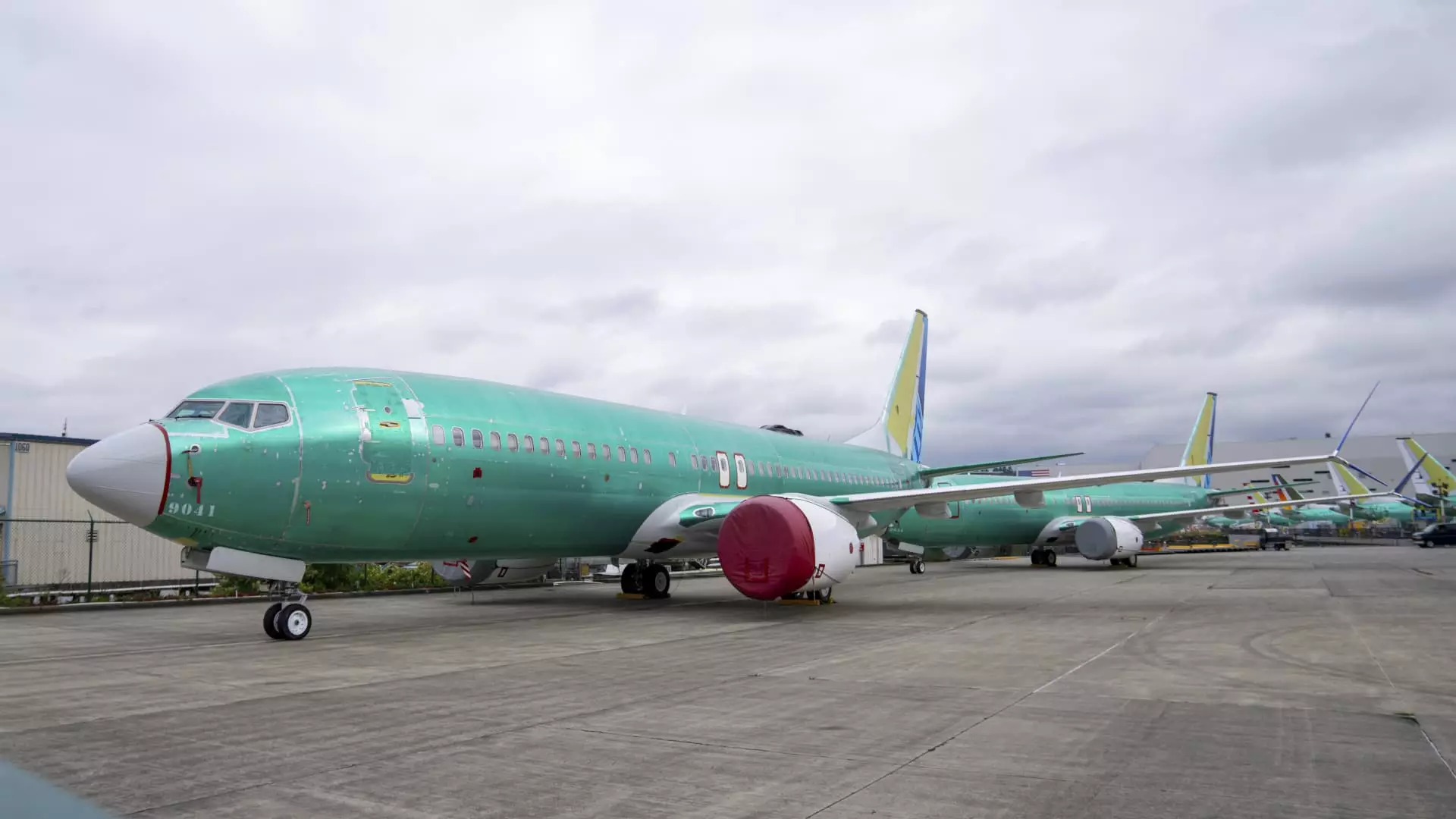Boeing, once a formidable leader in the aerospace industry, has recently faced significant adversities that have forced it to reconsider its operational strategies. As the company grapples with mounting losses, the decision to cut approximately 10% of its workforce—amounting to around 17,000 jobs—underscores the severity of its current situation. This decision, coupled with the prolonged machinist strike that has paralyzed its aircraft production for over five weeks, indicates a turbulent period for the aerospace giant. Furthermore, Boeing’s delay in launching its new wide-body aircraft, the 777X, now scheduled for delivery in 2026—six years behind the initial timeline—reflects systemic issues within the company that have been exacerbated by external factors.
In a recent announcement, CEO Kelly Ortberg confirmed that Boeing anticipates reporting a substantial loss of $9.97 per share for the third quarter. This financial shortfall is accompanied by a staggering pretax charge of $3 billion for its commercial airplane sector and an additional $2 billion in its defense division. The expectation of an operating cash outflow of $1.3 billion signifies not just a challenging quarter but a worrisome trend that points toward potential insolvency if corrective measures are not promptly taken. Ortberg’s memo to staff highlights the critical nature of the situation, declaring that the company is in a “difficult position.” As he navigates this crisis, conflicting demands from stakeholders complicate the path to recovery.
Having been in his role for just over two months, Ortberg faces the daunting task of orchestrating a turnaround against a backdrop of safety and manufacturing crises. The machinist strike represents perhaps the most formidable challenge he has encountered thus far. The strike, which began on September 13 after union members overwhelmingly rejected a tentative agreement, has raised alarm bells among credit rating agencies, leading to fears that Boeing may soon lose its investment-grade status. The ongoing labor conflict has reportedly cost the company more than $1 billion each month.
Moreover, the relationship between Boeing and the International Association of Machinists and Aerospace Workers has further soured. Boeing’s withdrawal of a contract offer—together with accusations of bad faith negotiations toward the labor union—illustrates the contention that permeates their negotiations. The union’s response, criticizing Boeing’s sweetened proposal that lacked prior negotiation, highlights a growing distrust that complicates the recovering trajectory of the company.
As part of Ortberg’s strategy, significant structural changes are necessary to restore Boeing’s competitiveness. Job and cost cuts represent only the beginning of a comprehensive restructuring effort aimed at stabilizing the company’s financial footing. Notably, these cuts emerge after a period of frantic hiring in the wake of the pandemic, a response to a sharp decline in demand that left the organization vulnerable to the current upheaval.
The company’s impending halt of commercial 767 freighter production in 2027—as it seeks to fulfill remaining orders—suggests a deliberate shift in focus, potentially moving towards more financially viable operations. Recognizing that the challenges faced today not only require immediate responses but also sustainable solutions, Boeing’s leadership is under immense pressure to recalibrate its strategies and restore confidence among stakeholders.
The road ahead for Boeing is laden with uncertainty; however, the steps that Ortberg and his team choose to take next will be pivotal. The layoffs and strategic pivots may yield short-term liquidity relief but will also bring long-term implications for workforce morale, public trust, and labor relations. As Boeing undergoes this transformation, a commitment to transparent communication and constructive engagement with stakeholders will be essential.
Boeing stands at a crossroads of potential revitalization or continued decline. The choices made in the coming months will profoundly shape the future of an organization that has historically been synonymous with innovation and resilience in the aerospace sector. The actions taken now will determine not only the fate of the employees impacted by job cuts but also the overall future direction of the company itself.

